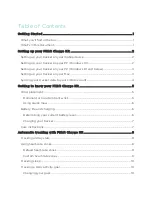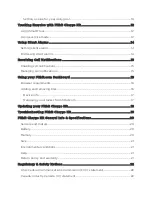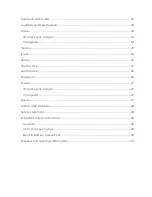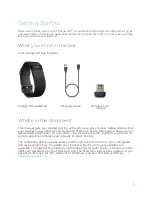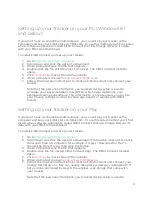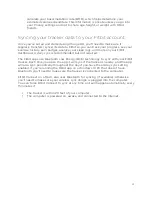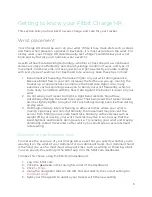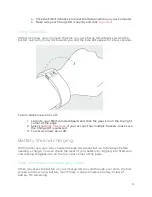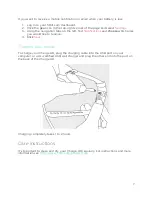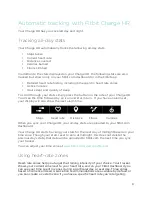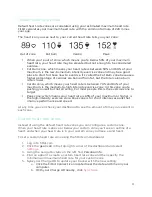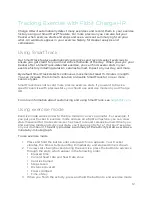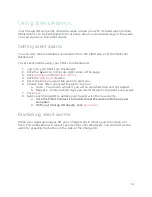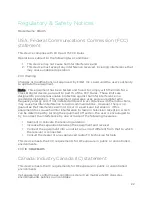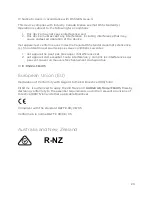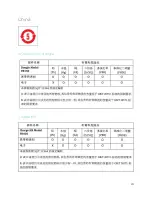
9
Default heart-rate zones
Default heart-rate zones are calculated using your estimated maximum heart rate.
Fitbit calculates your maximum heart rate with the common formula of 220 minus
your age.
The heart icon you see next to your current heart rate tells you your zone:
Out of zone Fat burn Cardio Peak
•
When you’re out of zone, which means you’re below 50% of your maximum
heart rate, your heart rate may be elevated but not enough to be considered
exercise.
•
Fat Burn zone, which means your heart rate is between 50% and 69% of your
maximum, is the low-to-medium intensity exercise zone and may be a good
place to start for those new to exercise. It’s called the Fat Burn zone because a
higher percentage of calories are burned from fat, but the total calorie burn
rate is lower.
•
Cardio zone, which means your heart rate is between 70% and 84% of your
maximum, is the medium-to-high intensity exercise zone. In this zone you’re
pushing yourself but not straining. For most people this is the exercise zone to
target.
•
Peak zone, which means your heart rate is 85% of your maximum or higher, is
the high-intensity exercise zone. Peak zone is for short intense sessions that
improve performance and speed.
At any time you can check your dashboard to see the amount of time you’ve spent in
each zone.
Custom heart-rate zones
Instead of using the default heart rate zones you can configure a custom zone.
When your heart rate is above or below your custom zone you’ll see an outline of a
heart, and when your heart rate is in your custom zone you’ll see a solid heart.
To set a custom heart rate zone using the fitbit.com dashboard:
1.
Log in to fitbit.com.
2.
Click the
gear icon
in the top-right corner of the dashboard and select
Settings
.
3.
Using the navigation tabs on the left, find
Personal Info
.
4.
Find an option to create a custom heart rate zone and then specify the
minimum and maximum heart rate for your custom zone.
5.
Sync
your Charge HR to update your tracker with the new setting:
a.
Click the Fitbit Connect icon located near the date and time on your
computer.
b.
With your Charge HR nearby, click
Sync Now
.


